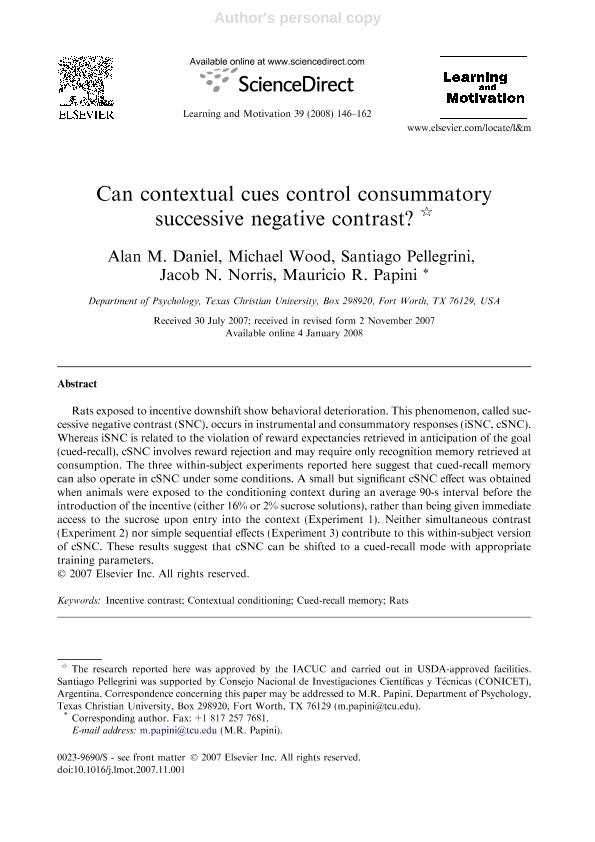Artículo
Can contextual cues control consummatory successive negative contrast?
Fecha de publicación:
05/2008
Editorial:
Academic Press
Revista:
Learning And Motivation
ISSN:
0023-9690
Idioma:
Inglés
Tipo de recurso:
Artículo publicado
Clasificación temática:
Resumen
Rats exposed to incentive downshift show behavioral deterioration. This phenomenon, called successive negative contrast (SNC), occurs in instrumental and consummatory responses (iSNC, cSNC).Whereas iSNC is related to the violation of reward expectancies retrieved in anticipation of the goal (cued-recall), cSNC involves reward rejection and may require only recognition memory retrieved at consumption. The three within-subject experiments reported here suggest that cued-recall memory can also operate in cSNC under some conditions. A small but significant cSNC effect was obtained when animals were exposed to the conditioning context during an average 90-s interval before the introduction of the incentive (either 16% or 2% sucrose solutions), rather than being given immediate access to the sucrose upon entry into the context (Experiment 1). Neither simultaneous contrast (Experiment 2) nor simple sequential effects (Experiment 3) contribute to this within-subject version of cSNC. These results suggest that cSNC can be shifted to a cued-recall mode with appropriate training parameters.
Palabras clave:
Incentive contrast
,
Contextual conditioning
,
Cued-recall memory
,
Rats
Archivos asociados
Licencia
Identificadores
Colecciones
Articulos(IDIM)
Articulos de INST.DE INVEST.MEDICAS
Articulos de INST.DE INVEST.MEDICAS
Citación
Daniel, Alan; Wood, Michael; Pellegrini, Santiago; Norris, Jacob; Papini, Mauricio Roberto; Can contextual cues control consummatory successive negative contrast?; Academic Press; Learning And Motivation; 39; 2; 5-2008; 146-162
Compartir
Altmétricas




